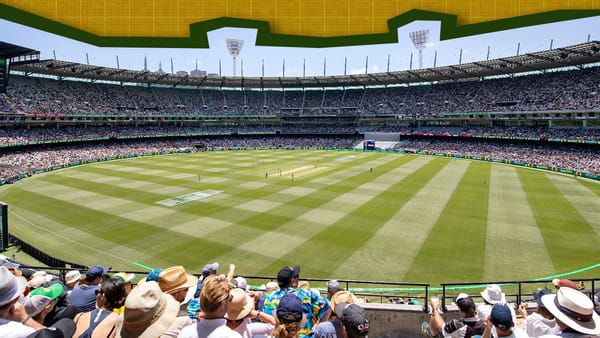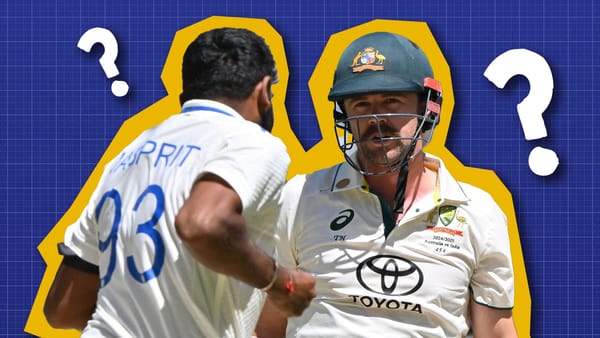The close Women's World Cup
We have a runaway favourite and a few of teams who we didn't expect much from, but this has been a fantastic tournament.
The end of the South African win over India in the final round was an interesting moment for Women’s cricket history. Because Round Robin games had rarely, if ever, been this important before. Especially without three biggest teams involved.
Locked in on @talkSPORT for @Cricket_TS updates through the night and ready with my keyboard for @TelegraphSport and @WomensSport 🖊 📝
— Georgie Heath (@GeorgieHeath27) 12:33 AM ∙ Mar 31, 2022
Here we go @englandcricket 🏏 🤞🏼
🏴 v 🇿🇦
#CWC22 #ENGvSA
This Women’s World Cup had one major design flaw: the timezone. The biggest market for women’s cricket so far has really been England. It was where the last World Cup was, and as the power moved out of England in the men’s game, it stayed there for the women.
They were the first professional team, have their own professional league, and the first one to really push the women as a real league, and not just tack them on to the side.
The only country that rivals them is Australia. An unbeatable team with the first professional league is an important part of all this.
And traditionally, the third country has been New Zealand in women’s cricket. They are the only other country that has won an ODI World Cup. And until 2016, these were the only three teams to have won. That West Indies had their T20 success that year.
Until that period, many other nations neglected or actively made it harder for their women’s teams.
This World Cup, while flawed, with too few teams and a terrible qualification process, that was not actually even a qualification in the end, was something quite different.
For one, all eight teams won a game. That isn’t something you expect coming in. Let’s start with Pakistan. They had one win, but that match was crucial. In a rain-shortened game against the West Indies, they won with eight wickets and seven balls in hand.

And this win was important twice because this was only Pakistan’s third win in World Cups, taking them one above Denmark and Netherlands.
That on its own is something remarkable.
But the win was also huge because it shook up the entire race. Had the West Indies won this match, they would have been in the number three slot, meaning England would have been number four. Pakistan’s win was small but changed who was in the final.
Bangladesh also got only one win. Against Pakistan. This was their first win in a World Cup, and this was their first World Cup. It was also only their eleventh win ever.

They played their first match back in 2011. But this team as a concept really didn’t exist before the last couple of years. Yet, they won six out of seven matches coming into this tournament against Pakistan and Zimbabwe. Their deadly accurate bowlers caused trouble for the West Indies and South Africa in this tournament.
And the next team on the table was New Zealand. At home. With Susie Bates and Amelia Kerr. From an ICC perspective having the home team being this bad is terrible. This low is amazing from a women’s cricket view, struggling with a stacked kiwi lineup. This was the team who beat Australia in a warm-up.
In truth they ended up only a point out of the finals, but they were two wins and one loss to start the tournament, so you probably expected better. But in their losses was one of the other trends, close games. They lost to the West Indies by three runs with a ball to spare to start the tournament.
South Africa beat them eight wickets down with three balls to spare. And then England ended them when Anya Shrubsole dragged them over the line nine wickets down. New Zealand ended up with three wins from seven matches and easily could have ended six from seven.
There were plenty of other close matches too. West Indies beat England by only seven runs. Bangladesh defeated Pakistan by nine runs in the battle not to come last. South Africa beat England with three wickets in hand in the last over. And the West Indians beat Bangladesh by only four runs.
It seemed like a tournament with an abnormally high amount of close matches. Considering one of the teams was Australia, who have now won 38 games out of their last 40, tight matches weren't really an obvious one.
Sadly the close games seem to have ended now that the finals are here. England had been on the verge of leaving early since losing their first three games but have found form at the right time. Whereas South Africa cruised through qualifying and then got smashed in the semi-final. This is a shame because, if nothing else, it means the easy joke is to compare them to the men’s team. But also, this was the golden generation of women’s cricket in South Africa. This was their big chance, and to go out so meekly in the semi-finals is such a shame.
The West Indies are an even more interesting story; after 2016 they seemed to fall off. And little was assumed of them coming in, and they upset New Zealand and England to start the tournament. Later on they almost lost both their games against Pakistan and Bangladesh, before being crushed by Australia.
So Australia and England were in the final, and that is normal. But let’s just go back to that game I mentioned at the start. India needed to win in order to get into the finals, and South Africa wanted to win to prove their credentials.
South Africa was cruising at four wickets and then had two runouts and lost their minds. With two balls left, Mignon du Preez faced Deepti Sharma, and South Africa needed three runs from two balls. Du Preez tries to smash one over the leg side but finds long-on. Then the fourth official stops her from leaving the ground, but it turns out, Deepti has overstepped by less than a millimetre.
South Africa stumble home from the last ball, and India just go home.
That ended in this as well.
To the semi-finals WI go!!!!!
— Windies Cricket (@windiescricket) 8:41 AM ∙ Mar 27, 2022
#CWC22 #TeamWestIndies
The tournament has had some large obstacles. The best team is so much better than everyone else that they’ve not even been worth betting on in this tournament, and the two oldest and most consistent teams have ended in the final. Not to menmtion that India - and the TV audience that flows - didn’t even make the knockouts.
It was also up against some cricket, all big three men’s teams had Test series, and South Africa had Bangladesh. The timezone was clear, but the attention for cricket was not. Hell, it even ran into the IPL.
The ICC had been pleased with the attendance, the viewing and the advertising. They should be, this was a changed tournament, ending up out of summer, in a smaller market, and the two biggest teams made the final. Even then, it has been a spectacular success. It would be nice to get a close final, but maybe that’s asking for too much.
Also, I did a radio show with Mark Nicholas, Darren Gough and Alex Tudor recently about Shane Warne’s bowling, check it out.
Or just listen to the latest Wagon Wheel.




